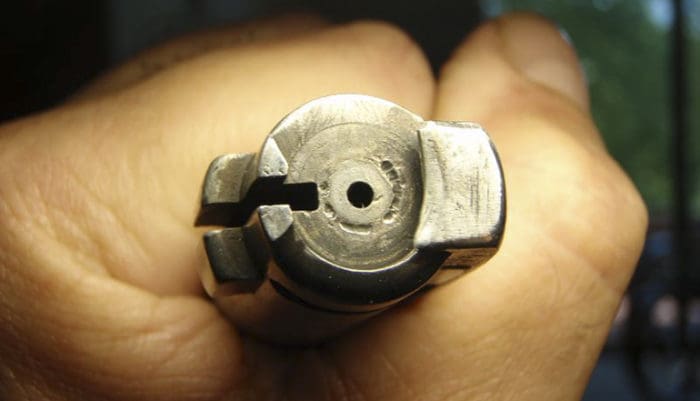The internet exists so that people can tell other people when they’re doing something wrong. Or that they’re doing is better than what everyone else has chosen to do. It seems that the more trivial the topic, the more heated the argument becomes.
Case in point: the “controversy” over various types of extractors and their relative merits. People of the various types of gun with too much time on their hands spend a lot of it learning about the topic and then arguing with other people in forums and comment sections throughout the gunosphere. Which, as we all know, is among the most productive things humans can possibly do.
While it doesn’t quite rise to the level of GLOCK vs. 1911 or .45 vs 9mm, the relative merits and drawbacks of each type of extractor has become one of the many bones of contention between firearms enthusiasts. But does it actually matter in the real world?
For instance, one form of this argument bas been going on for years between Model 70 owners and Remington 700 owners.
The former, as we know, has a Mauser-stye claw extractor on the bolt which they claim is better for “controlled round feeding,” in which the bolt completely controls the cartridge as it’s fed into the chamber, and then when the empty casing is removed. This is highly desirable, we are told, especially when buying a dangerous game rifle as it’s considered more reliable. You’re not likely to jam the gun if you don’t fully slam a round home under stress.
Look at the fine English gun houses that make legendary dangerous game rifles. Virtually all of them produce Mauser-action bolt rifles that very, very few of us can afford. Granted, one of the worst kept secrets of high-end guns is that the better gun makers in Spain and Turkey turn out guns that are almost the equal of the English guns and cost barely a tenth the cost. But that’s another story for another day.
Is the claw extractor really better? While Pre-64 Model 70 rifles were deployed in Vietnam (Carlos Hathcock used one) the Remington 700 was the sniper rifle platform used by both the Army and the Marines for quite some time and that gun uses a blade extractor.
The 700 uses a push feed action and its extractor is located inside the closed ring of the recessed bolt face. A push feed bolt nudges the next round into the chamber and doesn’t control it until the round’s fully in the chamber. Remington’s 700 push feed bolt is less expensive to produce.
1911 guys are just as prone to this discussion. The default for the platform is an internal extractor, located on the interior of the slide. A few renegade outfits install an external extractor, which most other semi-autos relay on these days.
Sig Sauer 1911s, for instance, have the external extractor. So do Smith and Wesson’s SW1911s.
But John Browning’s original version of quite possibly the most perfect gun ever made, of course, did not. And most other 1911 pistols do just fine with the internal unit.
And so it goes.
In my experience — which may differ from yours — it doesn’t actually matter all that much. Bolt-action rifles that left the factory without issues and are kept in good working order and are operated properly tend to work properly. Likewise with semi-auto pistols. Extractors fail because that particular extractor was poorly made or improperly installed. What type it is…doesn’t seem to matter all that much.
But that’s me. As always, the caveat; your mileage may vary. What’s your experience been? Have you found a performance difference between one type of extractor over another on a certain platform. Go ahead…start the argument.
Tim lives in the Spokane area. He grew up around guns and the outdoors and spends as much time around both as he can.
